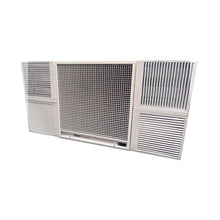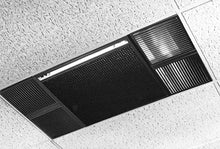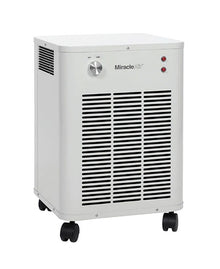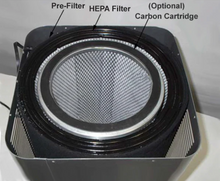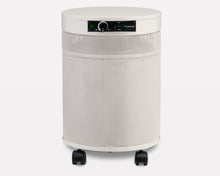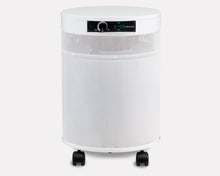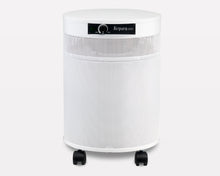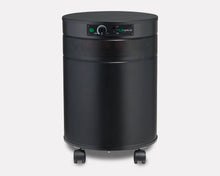Preparing Schools for Cold and Flu Season: A Complete Guide to Reducing Illness and Absenteeism

School administrators, teachers, and parents all share the same concern as autumn approaches: how can we keep students healthy and in the classroom during cold and flu season? Last year alone, school-aged children missed an average of 8.2 days due to respiratory illnesses, according to the National Center for Health Statistics. These absences don't just impact individual learning—they strain entire school systems, affect standardized test performance, and force families to scramble for childcare solutions.
The good news? Research shows that comprehensive prevention strategies can reduce respiratory illness transmission in schools by up to 40%. This guide combines the latest scientific evidence with practical implementation strategies to help your school community stay healthier this season.
The Hidden Cost of School-Based Illness Outbreaks
When we think about cold and flu season in schools, we often focus on the immediate discomfort of sick children. However, the broader impact extends far beyond individual cases of sniffles and fever.
The Centers for Disease Control and Prevention reports that respiratory illnesses account for nearly 22 million lost school days annually in the United States. Each absent student represents more than just an empty desk—research from the Journal of School Health demonstrates that chronic absenteeism, often triggered by recurring illness, directly correlates with lower academic achievement and increased dropout rates.
From a practical standpoint, widespread illness creates a domino effect throughout the school community. Teachers burn through substitute coverage, custodial staff face increased cleaning demands, and school nurses become overwhelmed with symptomatic students. Meanwhile, working parents face the impossible choice between caring for sick children and maintaining employment stability.
The financial implications are equally staggering. Schools lose approximately $60 per day in state funding for each absent student, while families spend an estimated $1,674 annually on illness-related childcare and lost wages, according to recent economic analysis by the Brookings Institution.
Perhaps most concerning is the perpetual cycle that develops in many school environments. Poor indoor air quality and inadequate ventilation create conditions where viruses and bacteria can thrive and spread rapidly among densely populated classrooms. One sick student can easily become ten, twenty, or more within days.
Understanding How Illness Spreads in School Environments
Schools present unique challenges for disease prevention due to several environmental and behavioral factors that create perfect conditions for pathogen transmission.
The Role of Indoor Air Quality
Most people assume that cold and flu viruses spread primarily through direct contact—touching contaminated surfaces or shaking hands with infected individuals. While contact transmission does occur, mounting scientific evidence shows that airborne transmission plays a far more significant role than previously understood.
Research examining indoor environments has found that respiratory droplets and aerosols containing viable viruses can remain suspended in indoor air for extended periods. In poorly ventilated spaces like many traditional classrooms, these microscopic particles accumulate and create conditions that facilitate disease transmission. The EPA's comprehensive analysis of school environments emphasizes that this issue affects not just individual health outcomes, but impacts the learning environment for all 64 million students in educational settings nationwide.
The challenge intensifies in winter months when schools keep windows closed and reduce outside air circulation to conserve energy. This creates a sealed environment where pathogens can concentrate to dangerous levels. The Environmental Protection Agency has consistently ranked indoor air pollution among the top five environmental risks to public health, with schools being particularly vulnerable due to their high occupancy rates and often inadequate ventilation systems.
Behavioral Factors in Schools
Children naturally engage in behaviors that facilitate disease spread. They touch their faces frequently, share supplies and food, and often forget proper hand hygiene practices. Additionally, the social nature of school environments means students spend extended periods in close proximity, whether during classroom instruction, lunch periods, or playground activities.
Teachers face their own unique risks. They interact with dozens or hundreds of students daily, often in poorly ventilated spaces, while managing stress levels that can compromise immune function. A study from the American Journal of Infection Control found that teachers have significantly higher rates of respiratory illness during the school year compared to summer months.
Environmental Stressors
Beyond air quality, other environmental factors contribute to increased illness susceptibility in schools. Inadequate lighting, uncomfortable temperatures, and high noise levels all create physiological stress that weakens immune responses. When combined with academic pressure and social dynamics, these stressors create conditions where both students and staff become more vulnerable to infection.
Evidence-Based Prevention Strategies That Work
Effective illness prevention in schools requires a multi-layered approach that addresses environmental, behavioral, and policy factors simultaneously.
Ventilation and Air Quality Improvements
The most impactful intervention schools can implement involves improving indoor air quality through enhanced ventilation and air cleaning technologies. The American Society of Heating, Refrigerating and Air-Conditioning Engineers (ASHRAE) updated their standards following extensive research into airborne disease transmission, now recommending minimum ventilation rates of 10 cubic feet per minute of outside air per person in classrooms.
Recent research published in the American Lung Association's analysis of school environments reveals compelling evidence about the connection between air quality and academic performance. Their findings show that children in classrooms with higher outdoor air ventilation rates and cleaner indoor air quality tend to achieve higher standardized test scores. This research underscores that improved air quality doesn't just reduce illness—it creates optimal learning conditions that benefit all students.
For schools with older HVAC systems that cannot meet these requirements, portable air cleaning solutions provide an effective alternative. Studies examining the relationship between air pollution and school attendance have found that air pollution on previous days considerably influences respiratory illnesses and school absences, suggesting that consistent air quality improvements can have measurable impacts on daily attendance rates.
The key lies in selecting air cleaning technology that specifically targets airborne pathogens. HEPA filtration systems remove 99.97% of particles 0.3 microns and larger, which includes most bacteria and viruses. More advanced systems incorporate UV-C light or photocatalytic oxidation to actively destroy pathogens rather than simply capturing them.
When implementing air purification solutions, proper sizing and placement become critical factors. The Environmental Protection Agency provides specific guidelines for calculating room coverage requirements based on air changes per hour. Generally, schools should target 4-6 air changes per hour in occupied spaces, with higher rates in areas like nurse's offices or isolation rooms.
Hand Hygiene and Surface Cleaning Protocols
While airborne transmission receives increasing attention, contact transmission through contaminated surfaces remains significant. Effective hand hygiene programs require more than simply placing sanitizer dispensers around campus.
Research from the American Journal of Preventive Medicine shows that structured hand hygiene education programs, when combined with adequate supplies and monitoring, reduce illness-related absenteeism by 19-21%. The most successful programs include age-appropriate instruction on proper handwashing technique, regular reinforcement through visual cues and reminders, and strategic placement of hand hygiene stations at key locations like classroom entrances, cafeterias, and restrooms.
Surface cleaning protocols should focus on high-touch areas that facilitate pathogen transfer. These include doorknobs, light switches, shared technology devices, playground equipment, and cafeteria surfaces. EPA-approved disinfectants with specific claims against common respiratory viruses provide the most reliable protection when used according to manufacturer instructions.
Creating Healthy Spaces Through Design
Forward-thinking schools are incorporating illness prevention principles into their physical design and space utilization strategies. This includes maximizing natural light exposure, which research shows supports immune function and reduces pathogen survival on surfaces.
Classroom layouts that allow for better air circulation and maintain appropriate spacing between students also contribute to reduced transmission. While not all schools can renovate extensively, simple changes like removing unnecessary furniture that blocks airflow or rearranging seating patterns can make meaningful differences.
Common areas like cafeterias and libraries benefit from increased ventilation during peak usage periods. Some schools have successfully implemented staggered scheduling to reduce occupancy density while maintaining normal operations.
Implementing Air Purification Solutions in Educational Settings
When schools decide to invest in air cleaning technology, understanding the different options and their specific applications helps ensure maximum effectiveness and value.
Selecting Appropriate Technology
Not all air purifiers are created equal, particularly in high-occupancy environments like schools. The most effective solutions for educational settings typically combine multiple purification methods to address different types of airborne contaminants.
HEPA filtration provides the foundation for pathogen removal, but schools should look for systems that also address volatile organic compounds (VOCs) from cleaning products, art supplies, and building materials. Activated carbon filters handle chemical contaminants, while some advanced systems include specialized media for specific concerns like allergens or odors.
UV-C technology offers particular advantages in school environments because it actively destroys pathogens rather than simply capturing them. This eliminates the risk of collected contaminants being released back into the air and reduces ongoing maintenance requirements. However, UV-C systems must be properly shielded to prevent direct exposure to occupants.
Installation and Maintenance Considerations
Successful air purification programs require careful planning around installation logistics and ongoing maintenance requirements. Portable units offer flexibility and lower upfront costs, but require regular filter changes and may create noise concerns in quiet learning environments.
Integrated solutions that work with existing HVAC systems provide more comprehensive coverage but require professional installation and may have higher initial costs. The total cost of ownership, including energy consumption and maintenance requirements, should factor into decision-making processes.
Schools should establish clear maintenance protocols that include regular filter replacement schedules, performance monitoring, and staff training on proper operation. Many successful programs assign specific responsibilities to facilities staff and include air quality metrics in routine building assessments.
Measuring Success and ROI
Quantifying the impact of air purification investments helps schools justify costs and optimize their approaches. Key metrics include tracking illness-related absences, nurse office visits, and indoor air quality measurements like particulate counts and CO2 levels.
Some schools have found success in conducting simple before-and-after comparisons, measuring baseline illness rates during one school year and comparing them to rates after implementing air cleaning solutions. While multiple factors influence illness transmission, sustained reductions in respiratory illness absences provide strong evidence of program effectiveness.
Cost-benefit analyses should consider both direct savings from reduced substitute teacher costs and state funding retention, as well as indirect benefits like improved learning continuity and reduced staff burnout.
Creating a Comprehensive School Health Plan
Effective illness prevention requires coordination across multiple aspects of school operations, from facilities management to educational programming.
Policy Development and Communication
Clear policies help ensure consistent implementation of prevention strategies across all school locations and staff members. Effective policies address when students should remain home due to illness, procedures for cleaning and disinfection following confirmed cases, and protocols for managing symptomatic individuals during school hours.
Communication strategies should engage all stakeholders in prevention efforts. This includes educating families about symptom recognition and home isolation guidelines, training staff on proper hygiene practices, and keeping the broader school community informed about prevention measures and their effectiveness.
Staff Training and Student Education
Prevention strategies only work when properly implemented by informed individuals. Comprehensive training programs should cover proper use of air purification equipment, effective cleaning and disinfection techniques, and recognition of illness symptoms that require isolation or medical attention.
Student education programs work best when integrated into existing health curriculum rather than presented as standalone initiatives. Age-appropriate lessons on germ transmission, hand hygiene, and respiratory etiquette help students become active participants in prevention efforts rather than passive recipients of adult-imposed rules.
Monitoring and Continuous Improvement
Successful schools treat illness prevention as an ongoing process rather than a one-time intervention. Regular assessment of prevention strategies helps identify areas for improvement and ensures that investments continue providing value over time.
This includes monitoring indoor air quality metrics, tracking illness trends throughout the school year, and soliciting feedback from students, staff, and families about the effectiveness of prevention measures. Schools that embrace continuous improvement typically see better long-term outcomes and higher stakeholder satisfaction with their health initiatives.
Frequently Asked Questions
Q: How much should schools expect to spend on air purification systems? A: Costs vary significantly based on room size, technology type, and coverage requirements. Portable HEPA units for individual classrooms typically range from $200-800, while whole-building solutions may require investments of $10,000-50,000 or more. However, the cost savings from reduced absenteeism often offset these investments within 1-2 years.
Q: Can air purifiers eliminate the need for other prevention measures like hand hygiene? A: No. Air purification is most effective as part of a comprehensive prevention strategy that includes proper hand hygiene, surface cleaning, and appropriate policies for managing illness. Think of air cleaning as one important layer in a multi-faceted approach.
Q: How quickly can schools expect to see results from improved air quality measures? A: Some benefits, like reduced odors and improved comfort, may be immediate. However, meaningful reductions in illness transmission typically become apparent over 4-8 weeks of consistent implementation, as baseline illness patterns in schools can vary significantly.
Q: Are there specific air purifier features that work better in school environments? A: Look for units with low noise levels (under 50 decibels), easy filter replacement, and coverage appropriate for classroom size. HEPA filtration is essential, and UV-C technology provides additional pathogen destruction benefits. Energy efficiency ratings help minimize operating costs.
Q: How can schools with limited budgets implement effective air quality improvements? A: Start with maximizing existing ventilation by ensuring HVAC filters are changed regularly and systems are properly maintained. Simple measures like opening windows during appropriate weather and using fans to improve air circulation can provide meaningful benefits while schools plan for more comprehensive solutions.
Moving Forward: Your School's Path to Healthier Seasons
Preparing schools for cold and flu season requires proactive planning and evidence-based strategies that address the root causes of illness transmission. While the challenge may seem overwhelming, research consistently shows that comprehensive prevention approaches can dramatically reduce illness-related disruptions to learning.
The most successful schools start with a clear understanding of their current indoor air quality and existing prevention measures, then systematically implement improvements based on available resources and specific facility needs. Whether beginning with enhanced cleaning protocols, investing in air purification technology, or developing comprehensive health policies, every step toward better prevention makes a meaningful difference for students, staff, and families.
Remember that illness prevention is ultimately about creating environments where learning can flourish uninterrupted. When schools invest in the health and well-being of their communities, they're investing in educational success that extends far beyond any single flu season.
The evidence is clear: schools that prioritize indoor air quality and comprehensive illness prevention see measurable improvements in attendance, academic performance, and overall community satisfaction. As we face another cold and flu season, the question isn't whether schools can afford to implement these strategies—it's whether they can afford not to.
For more information on implementing indoor air quality solutions in educational settings, consult with certified indoor air quality professionals and review current guidelines from the EPA's Reference Guide for Indoor Air Quality in Schools and CDC recommendations for educational facilities.
Sources:
- Environmental Protection Agency. "Reference Guide for Indoor Air Quality in Schools." 2014.
- American Lung Association. "Schools Indoor Air Quality FAQs." 2024.
- Environmental Economics Research. "Air pollution and school absences: Evidence from a panel study." ScienceDirect, 2017.

